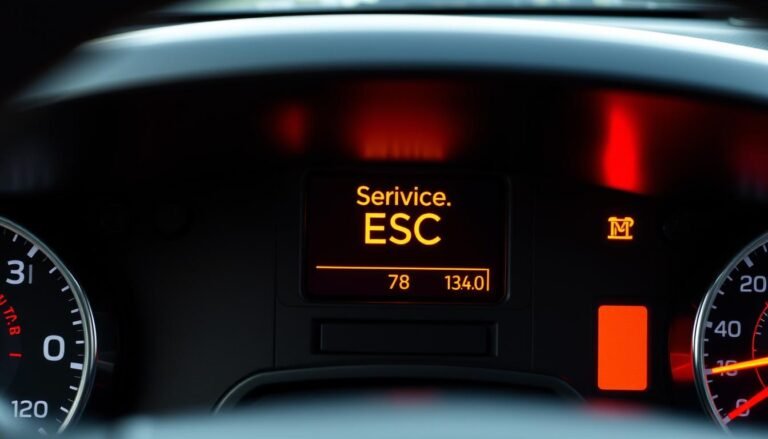How To Reset Transmission Control Module Chevy? Exclusive Guide
Want how to reset Transmission Control Module Chevy (TCM)? It’s a great way to boost your car’s performance. This guide gives you the steps for the Chevy TCM reset.
You’ll see methods like disconnecting the battery or using an OBD-II scanner. We’ll show you how to reset your TCM.
The TCM is crucial for smooth gear shifts and power. If your gear shifts are odd or you hear transmission sounds, it’s time for a reset.
We’ll tell you what tools you need, the safety steps to follow, and common problems you might face. Follow our guide, and you’ll get your Chevy running smoothly again.
What’s The Transmission Control Module (TCM)?
The Transmission Control Module, or TCM, is key in Chevy vehicles. It greatly affects your car’s performance and how it drives.
Mainly, it handles the vehicle’s transmission system to make driving smoother.
What is The TCM?
The chevy transmission control module works as the transmission’s brain. It gathers info from various sensors to tweak how the vehicle performs.
By looking at engine speed, throttle position, and more, it figures out the best times to shift gears.
This helps make sure gear changes are smooth, whether speeding up or slowing down.
Key Functions of TCM
- Regulates gear shifting to optimize performance
- Adjusts fluid pressure for improved efficiency
- Monitors shift timing based on real-time data
- Enhances vehicle responsiveness through instant adjustments
Knowing how the TCM works matters for all car owners. It plays a big role in a vehicle’s performance, gas mileage, and how long it lasts.
Ignoring TCM problems can lead to major transmission issues later.
Common Symptoms of TCM Issues
Your Chevy may show signs indicating TCM problems. Spotting these early can prevent expensive fixes and keep your car running well. Knowing what’s wrong with your transmission is key to fixing it.
Signs Your Chevy May Need a TCM Reset
Look out for these signs of transmission troubles:
- Erratic shifting or sudden gear changes.
- Delayed response when shifting from park to drive.
- Gears slipping during speeding up or slowing down.
- Odd sounds, like grinding or whining, during gear shifts.
- Transmission warning light on your dashboard.
Effects of Ignoring TCM Problems
Not dealing with TCM issues can badly harm your car. Problems that might happen include:
- More wear on transmission parts.
- Total transmission failure, requiring a new one.
- Worse gas mileage from not shifting correctly.
- Bigger repair bills due to more damage.
Why Resetting The TCM is Sometimes Necessary?
Knowing why to reset a TCM sheds light on car upkeep. It’s crucial for those wanting their cars to run well.
Resetting the Transmission Control Module boosts the car’s performance and efficiency.
Benefits of Resetting The TCM
TCM reset does more than just fix issues. It clears trouble codes and adjusts settings, offering several advantages:
- Restoration of lost functionality: A timely reset can help re-establish any disrupted functionality.
- Improved responsiveness: Your vehicle may exhibit enhanced acceleration and shifting capabilities.
- Enhanced fuel efficiency: A recalibrated TCM allows for better fuel management, potentially lowering your fuel costs.
- Prevention of transmission overheating: Resetting aids in keeping the transmission cooler and less prone to damage.
Knowing the importance of resetting the TCM is key to good vehicle care. A proper TCM reset is vital for the car’s health and performance over time.
Resetting the TCM shows dedication to your vehicle’s long life and efficiency. It’s about managing your transmission well for the best driving experience.
Tools Needed For a TCM Reset
Getting ready to reset the Transmission Control Module (TCM) in your Chevy needs the right tools. This part lists what equipment you’ll need for a Chevy TCM reset.
It also talks about safety tools for TCM procedures to make sure the process is smooth and safe.
Essential Equipment For Chevy TCM Reset
You’ll need certain tools to reset the TCM properly. Here’s what you need for the job:
- OBD-II Scanner: Hooks up to your vehicle’s computer to find diagnostic trouble codes (DTCs). These codes point out engine and transmission problems, helping you fix them faster.
- Battery Disconnect Tool: This tool safely cuts off the vehicle’s battery. It stops accidental electrical issues and keeps electronic parts safe.
- Basic Hand Tools: You’ll use wrenches and sockets to change battery terminals, a common step in resetting the TCM. Make sure to use the right size to not damage anything.
Safety Equipment Recommendations
It’s crucial to use safety gear while resetting the TCM to protect yourself. Here’s the safety gear you should use:
- Insulated Gloves: Key for keeping your hands safe while you work with battery terminals and electrical parts.
- Safety Goggles: Normal glasses won’t cut it. Goggles protect your eyes from things like flying debris and battery acid.
Always check your vehicle’s manual for tools and instructions that fit your model. This makes sure you’re prepared and doing things correctly when resetting the TCM.

Safety Precautions Before Resetting
Before resetting the Transmission Control Module (TCM), make sure you follow all safety steps.
The success of resetting and your vehicle’s safety depend on being well-prepared and creating a safe workspace.
Preparing Your Vehicle
First, park your vehicle on a flat surface and turn on the parking brake. This reduces the chance of it moving and causing accidents.
Next, disconnect the battery’s negative terminal. This step is crucial for preventing electric shocks during the reset.
Environmental Considerations
Make sure your workspace is clean and dry before you start. This helps protect the electronic parts of your vehicle from damage.
Always check for moisture or debris to ensure a safe and effective TCM reset.
How To Reset Transmission Control Module Chevy?
To reset the TCM on a Chevy, follow some easy steps to improve your driving. Start by parking your car on a level surface.
Make sure it’s entirely turned off. Then, disconnect the negative battery terminal to stop power to the car’s electrical parts.
Wait for 15-30 minutes to let the system fully discharge. This waiting helps all capacitors lose their charge, which resets the system.
After waiting, reconnect the battery terminal. Now, you can use an OBD-II scanner to check and clear any trouble codes in the system.
By following these steps closely, you’ll reset your Chevy’s TCM. This method helps your car’s transmission control recalibrate.
It can improve your car’s performance and fix problems that have come up over time.

Battery Disconnection Method For TCM Reset
The chevy battery disconnection method is a simple way to reset your vehicle’s Transmission Control Module (TCM).
You only need basic tools for this. It’s key to disconnect the battery the right way to erase the TCM’s stored data. Here’s how to do a successful TCM reset.
Step-by-Step Guide To Battery Removal
- Find the vehicle’s battery, which is usually under the hood or in the trunk.
- Make sure your vehicle is off and take out the keys from the ignition.
- With a wrench, carefully take off the negative terminal first. This is the black cable.
- Then, remove the positive terminal, often marked with a red cable.
- Sometimes, taking out the entire battery gives you better access.
Importance of Waiting Period
Once you disconnect the battery, wait for at least 30 minutes to an hour. This waiting time is crucial to let the TCM capacitors discharge fully, enabling a successful reset.
If you don’t wait long enough, the memory might not clear completely. This could stop the TCM from working as well as it should.
By learning these TCM reset instructions and using the battery disconnection method, you can reset your Chevy’s transmission control module.
This leads to better performance of your vehicle.
Using an OBD-II Scanner For TCM Reset
Using an OBD-II scanner to reset the TCM is a smart and efficient way to fix transmission problems in your Chevy.
It does more than just reset; it also checks for other issues, giving you a full picture of your transmission’s condition.
Steps To Utilize Your OBD-II Scanner
- Locate the OBD-II port in your Chevy, usually found under the dashboard near the steering column.
- Connect your OBD-II scanner securely to the port.
- Turn on your vehicle’s ignition without starting the engine.
- Navigate through the scanner’s menu to find the function for TCM reset.
- Follow the on-screen prompts to complete the reset process.
- Disconnect the scanner after the reset is successful.
Benefits of Using an OBD-II Scanner
- Allows for accurate troubleshooting of transmission-related issues.
- Facilitates chevy scanner resetting TCM with minimal effort.
- Offers additional system diagnostics that may identify other necessary repairs.
- Saves money on professional diagnostic services.
- Helps in maintaining the long-term performance of your vehicle.
Transmission Relearn Procedure After Reset
After you reset your Chevrolet’s Transmission Control Module (TCM), it’s very important to do the transmission relearn procedure.
This step helps the TCM adapt to the changes and make your transmission work better. You’ll need to drive in a certain way, which is key for the relearn process to work.
When you’re in the relearn phase, keeping a constant speed and accelerating smoothly is crucial. Driving like this gives the TCM the right info to fine-tune.
This helps your Chevy transmission learn how you drive, leading to smoother gear changes and better drive quality.
- Drive for about 30 miles, allowing the TCM to experience different speeds.
- Avoid sudden stops or accelerations to prevent incorrect data from being logged.
- Monitor the vehicle’s performance throughout the process to assess improvements.
Finishing this process can make a big difference in how your Chevy’s transmission works.
These adjustments not only make driving smoother but also help your transmission last longer.
Troubleshooting Common Reset Issues
When you try to reset the Transmission Control Module (TCM), you might face some problems.
These issues can be caught early to save you time and stress. Common troubles include resets not completing and constant error messages.
Make sure your battery has enough charge and all connections are tight. Sometimes, hidden issues need a pro’s help.
Common Problems During TCM Reset
Resetting the TCM can lead to issues like:
- Inability to clear error codes
- Uncertain vehicle behavior after reset
- Consistent communication failures between TCM and other systems
- Poorly performing drivability due to relearning errors
How To Resolve These Issues?
To fix these Chevy TCM problems, do the following:
- Check Battery Status: Make sure your battery is fully charged. A low battery can mess with communication.
- Inspect Connections: Check that all wiring connections are secure. Bad grounding can cause big issues for the TCM.
- Perform a Hard Battery Reset: Unplug the battery and connect the cables together for 20-30 minutes. Then reconnect and let the car idle for a bit.
- Consult a Professional: If you still have issues, it’s best to get help from a skilled mechanic.

Professional vs DIY Reset Methods
Choosing between a professional TCM reset and doing it yourself is key for Chevy owners.
It’s crucial to know what each method entails. This helps you pick what’s best for you by looking at costs and skills needed.
Cost Analysis of Professional Services vs DIY
Professional chevy TCM reset services are priced between $150 to $450. They often include full diagnostics and expert help.
On the flip side, going the DIY route can cut costs, needing only $20 to $100 for tools and materials.
How confident you are with tech repairs should guide your DIY reset comparison.
| Reset Method | Cost Range | Expertise Required | Warranty Consideration |
|---|---|---|---|
| Professional TCM Reset | $150 – $450 | High | May maintain warranty |
| DIY TCM Reset | $20 – $100 | Low to Moderate | May void warranty |
Looking at the cost differences helps you decide if a professional or DIY TCM reset suits your budget and skill level. It’s important for taking good care of your vehicle.
Maintaining Your Transmission After Reset
After you reset your TCM, taking care of your chevy transmission is key. Doing this helps your car run better for longer.
It also lowers the chance of running into trouble later on. One important step is to keep an eye on the transmission fluid.
Make sure it’s at a good level and clean. Dirty or not enough fluid can cause your car to not work as well.
Routine Checks and Fluid Maintenance
- Check fluid levels every 30 days or before long trips.
- Inspect fluid condition by examining its color and scent. Clean fluid should be red and have a neutral smell.
- Replace transmission fluid and filter every 30,000 to 60,000 miles, following manufacturer guidelines.
- Adopt mindful driving habits that reduce stress on the transmission, such as avoiding rapid acceleration and heavy loads.
Following these tips helps keep your chevy transmission in good shape. Getting into the habit of regular checks and taking care of the fluid can prevent big problems down the road.

Conclusion
In summary, learning to reset your Chevy’s Transmission Control Module is crucial for top vehicle performance.
Using the right tools and following safety rules can help you fix TCM issues. Knowing when it’s time for a reset boosts your confidence in keeping your transmission in top shape.
The final thoughts about Chevy TCM stress the need to watch your vehicle’s performance closely. Deal with any TCM issues fast.
Following the guide helps ensure your module is reset right. This keeps your transmission working well, which improves your driving experience.
Make routine maintenance a habit to boost your vehicle’s reliability and performance.
Remember, taking good care of your transmission system helps you get the most out of your Chevy.
FAQs
How do I reset the transmission control module in my Chevy?
To reset the TCM, first, disconnect the negative battery terminal. Wait for 15-30 minutes. Then, reconnect it and use an OBD-II scanner to clear any trouble codes.
What are common symptoms of TCM issues in Chevy vehicles?
Erratic shifting, delayed gear engagement, and slipping during driving are common symptoms. They may point to TCM problems.
Do I need any special tools for a Chevy TCM reset?
Yes, an OBD-II scanner is essential for diagnostics. You might also need some basic hand tools and safety gear. Gloves and eye protection are important for safety.
How long should I wait after disconnecting the battery to reset the TCM?
Wait for 15-30 minutes after disconnecting the battery. This ensures the TCM fully resets before you reconnect the battery.
What should I do if the TCM reset doesn’t solve the transmission issue?
First, check the battery connections and its charge. If problems persist, it’s time to see a professional mechanic for further checks.
What is the cost difference between professional TCM resets and DIY methods?
Professional resets usually cost between 0 and 0. DIY methods can cost from to 0 for tools and supplies.
How do I maintain my transmission after resetting the TCM?
Keep an eye on the transmission fluid and filters. Replace them as recommended. Also, be mindful of how you drive. These habits help extend the life of your transmission.







